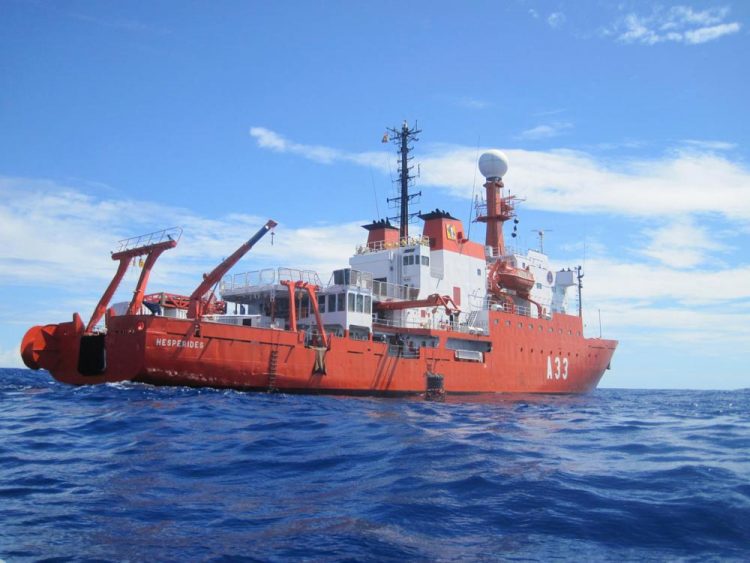Ocean atmosphere rife with microbes

At sea on the Malaspana 2010 Circumnavigation Expedition. Credit: © 2016 Joan Costa
Understanding the oceans' role as a source and sink for airborne microbes can provide insight into the maintenance of microbial diversity and how human, animal and plant pathogens spread over oceans and between landmasses.
The team, which included researchers from KAUST as well as several Spanish and French organizations, expected that they would find many more microbes over land than over water. What they didn't know was how many microbes actually exist in the atmosphere over the oceans.
More than 100 air samples were collected from tropical and subtropical regions over the Atlantic, Pacific and Indian oceans during an eight-month marine research expedition — the Malaspina 2010 Circumnavigation Expedition — that began in December 2010.
“We found that the atmosphere is a vector for the long-range transport — typically 4,000Km — of airborne microbes, including bacteria and fungi among others, says Carlos Duarte of KAUST's Red Sea Research Center, who led the study. “Even in the open ocean, more than half of the microbial load in the atmosphere is derived from land.” Atmospheric transport may be important in redistributing pathogens across the globe, he adds.
The team found an average of 67,000 prokaryotes (non-nucleus-containing single-celled organisms like bacteria) per cubic meter of sampled air over the oceans compared to 190,000 bacteria per cubic meter of air over land. They also found an average of 32,000 eukaryotes (nucleus-containing microbes like fungi) per cubic meter of sampled air over the oceans compared to 240,000 fungal spores found per cubic meter of atmosphere over land.
The maximum values of eukaryotes were found over the North Atlantic and East Pacific, most likely affected by African and Asian dust-related events in these regions.
The team conducted genetic analyses and found 25% of the microbes in the atmosphere above the oceans were of marine origin, while 42% were land-based organisms and the remaining 24% were undetermined. More than 50% of the microbes in samples taken from the South Atlantic and Indian Oceans, which were far from landmasses and influenced by marine air masses, were of terrestrial or undetermined origin.
“The results open up a new suite of research questions, including atmospheric pathways for the dispersal of pathogens, the role of small islands as stepping stones for the cross-basin transport of land microbes across vast distances, and the role these organisms play in condensing particles, including rain drops, in the atmosphere,” says Duarte.
He and his team have followed up with research on microbial loads over the Mediterranean Sea and the Arctic Ocean. They are also studying dust-associated organisms over the Red Sea.
Media Contact
All latest news from the category: Life Sciences and Chemistry
Articles and reports from the Life Sciences and chemistry area deal with applied and basic research into modern biology, chemistry and human medicine.
Valuable information can be found on a range of life sciences fields including bacteriology, biochemistry, bionics, bioinformatics, biophysics, biotechnology, genetics, geobotany, human biology, marine biology, microbiology, molecular biology, cellular biology, zoology, bioinorganic chemistry, microchemistry and environmental chemistry.
Newest articles

Innovative vortex beam technology
…unleashes ultra-secure, high-capacity data transmission. Scientists have developed a breakthrough optical technology that could dramatically enhance the capacity and security of data transmission (Fig. 1). By utilizing a new type…

Tiny dancers: Scientists synchronise bacterial motion
Researchers at TU Delft have discovered that E. coli bacteria can synchronise their movements, creating order in seemingly random biological systems. By trapping individual bacteria in micro-engineered circular cavities and…

Primary investigation on ram-rotor detonation engine
Detonation is a supersonic combustion wave, characterized by a shock wave driven by the energy release from closely coupled chemical reactions. It is a typical form of pressure gain combustion,…



